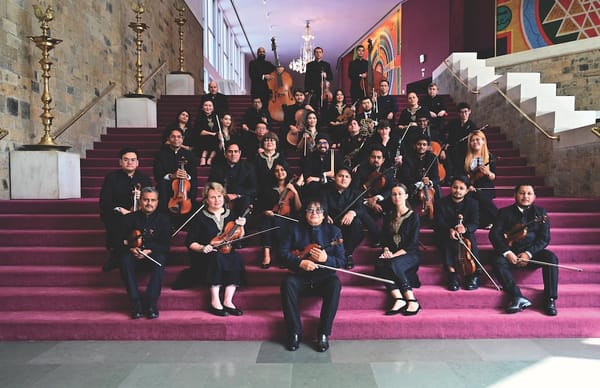Verdi’s Requiem at 150

This month marked the 150th anniversary of the first performance of Giuseppe Verdi’s Requiem. The premiere, led by the composer, took place on May 22, 1874 at the Church of San Marco in Milan, and was followed by subsequent performances at La Scala and in Paris.
Powerfully dramatic, Verdi’s Requiem is liturgy through the lens of opera. Scored for four vocal soloists (soprano, mezzo-soprano, tenor, and bass), double chorus, and orchestra, it is music conceived for the concert hall rather than the church. Verdi, the composer of 28 operas, and by all accounts an agnostic, presents the Latin Mass for the dead as a visceral, human drama. Writer René Spencer Saller describes the work as “ferocious and crude as a gut punch, tender and transcendent as a kiss.” William Berger finds “a unifying theme throughout Verdi’s works: a profound and sympathetic understanding of individuals struggling within the larger, usually oppressive, society,” and adds that ” The Requiem is perhaps the supreme example of this, extending those issues infinitely to explore the individual confronting the cosmos itself.”
Seeds were planted for the Requiem four days after the death of Gioachino Rossini in November of 1868. Verdi proposed that a group of prominent composers each contribute a movement for a Requiem to commemorate the first anniversary of Rossini’s death. Although the project fell through, Verdi sketched the final movement, Libera me, and then set it aside to complete Aida. Four years later, in May of 1873, Alessandro Manzoni, a novelist and a passionate advocate for the reunification of Italy, passed away at the age of 88. Verdi venerated Manzoni, and resolved to honor his memory by composing the Requiem.
Some listeners found Verdi’s theatrical approach to the Latin Mass to be sacrilegious. The conductor, Hans von Bülow, derided it as “his latest opera in ecclesiastical vestments.” After studying the score, Brahms insisted that “Bülow has made an almighty fool of himself…Only a genius could have written such a work.”
The Requiem begins with a halting, descending line in the celli and a mournful string choir. Instantly, the tone is set for an imaginary opera scene to come. Solemnly, the chorus intones the words, Requiem aeternam dona eis, Domine (“Grant them eternal rest, O Lord”). The Kyrie eleison (“Lord have mercy”) is introduced by the four soloists, entering in succession over a chromatic descending line in the orchestra.
The Dies irae (“Day of Wrath”) erupts with furious bass drum and timpani thunderclaps, and grotesque, shrieking lines in the violins and piccolo. The text, from a poem attributed to the 13th century Franciscan monk, Thomas of Celano, offers an apocalyptic first person vision of Judgement Day. Unfolding in a sequence of nine sections, this epic movement is a dramatic tour de force. In the Tuba mirum, trumpet fanfares ring out antiphonally, offstage and onstage, evoking apocalyptic biblical prophecy. The weeping Lacrymosa brings the movement to an end with a revelatory shift to G major.
The quartet of soloists takes centerstage in the Offertorium, a tender lullaby evoking the mercy of Christ. Beginning with celebratory trumpet fanfares, the Sanctus is an eight-part fugue for double chorus. Here, the perspective shifts, and we are addressed by angels and saints. Dancing lines emerge in the flute and violins, and the movement concludes with the boisterous hilarity of wild chromatic scales, heard in octaves throughout the orchestra.
The Agnus Dei (“Lamb of God”) begins as a solitary wandering melodic line, sung in bare octaves by the soprano and mezzo-soprano, and then picked up by the chorus. Gradually, new orchestral voices weave around the austere melody, adding warmth. The final chord brings a stark contrast between high, shimmering strings and low winds, with emptiness in between. The Lux aeterna (“Light eternal”) is a serene dialogue among the mezzo-soprano, tenor, and bass. There are intimate moments in which the voices emerge, a cappella. At other times, they are surrounded by celestial string tremolo.
The Libera me (“Deliver me”) takes the form of an operatic aria for the solo soprano. We are reminded that the demonic visions of the Dies irae are never far away. A tense four-part fugue reaches a tumultuous, apocalyptic climax and then falls back in defeat. The final words, “Libera me” are haunting and austere. As David Cairns suggests, they are “a prayer as much for the living as for the dead.”
This 2017 concert performance features Andrés Orozco-Estrada leading the Frankfurt Radio Symphony Orchestra and MDR Radio Choir. The soloists are Erika Grimaldi (soprano), Violeta Urmana (mezzo-soprano), Saimir Pirgu (tenor), and Kihwan Sim (bass).





